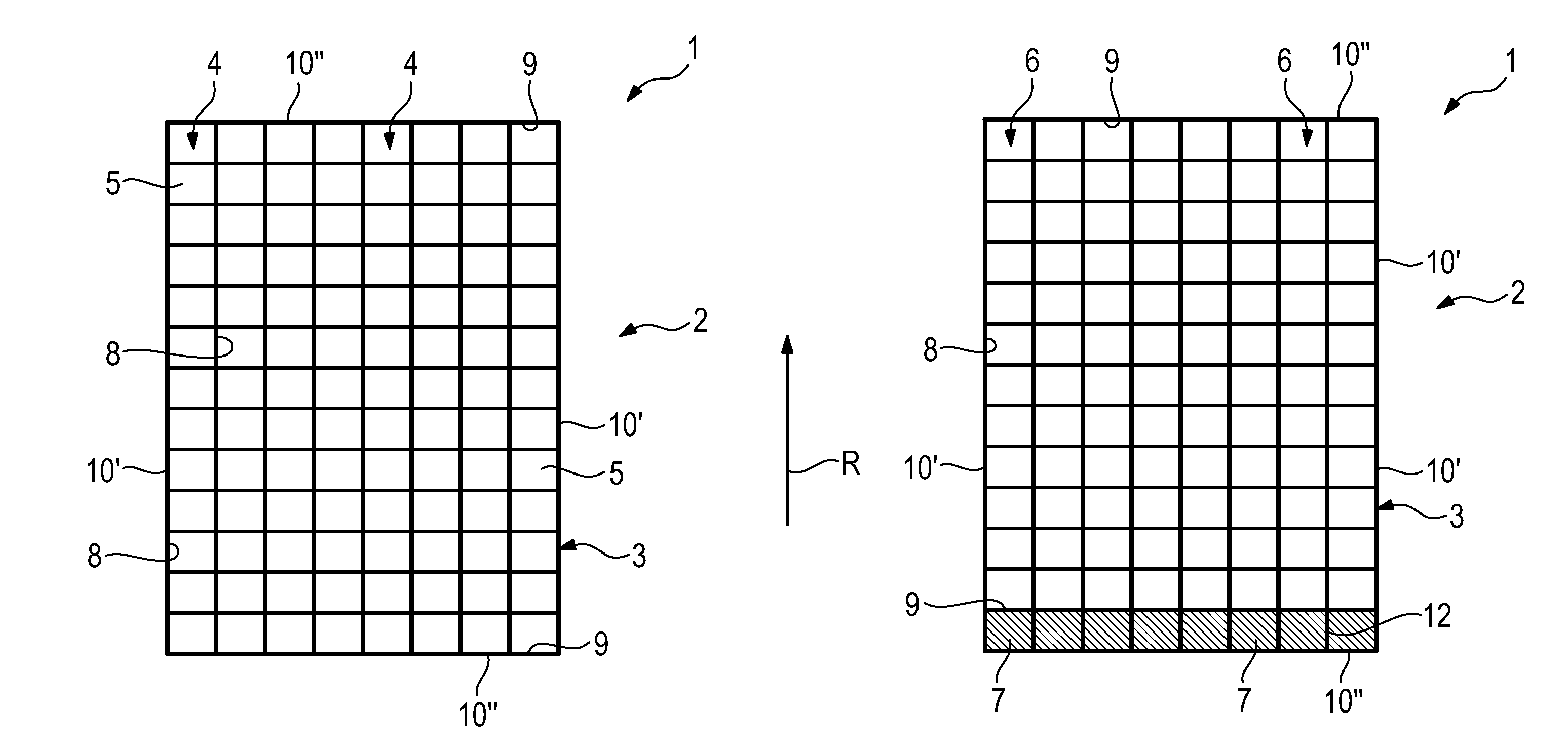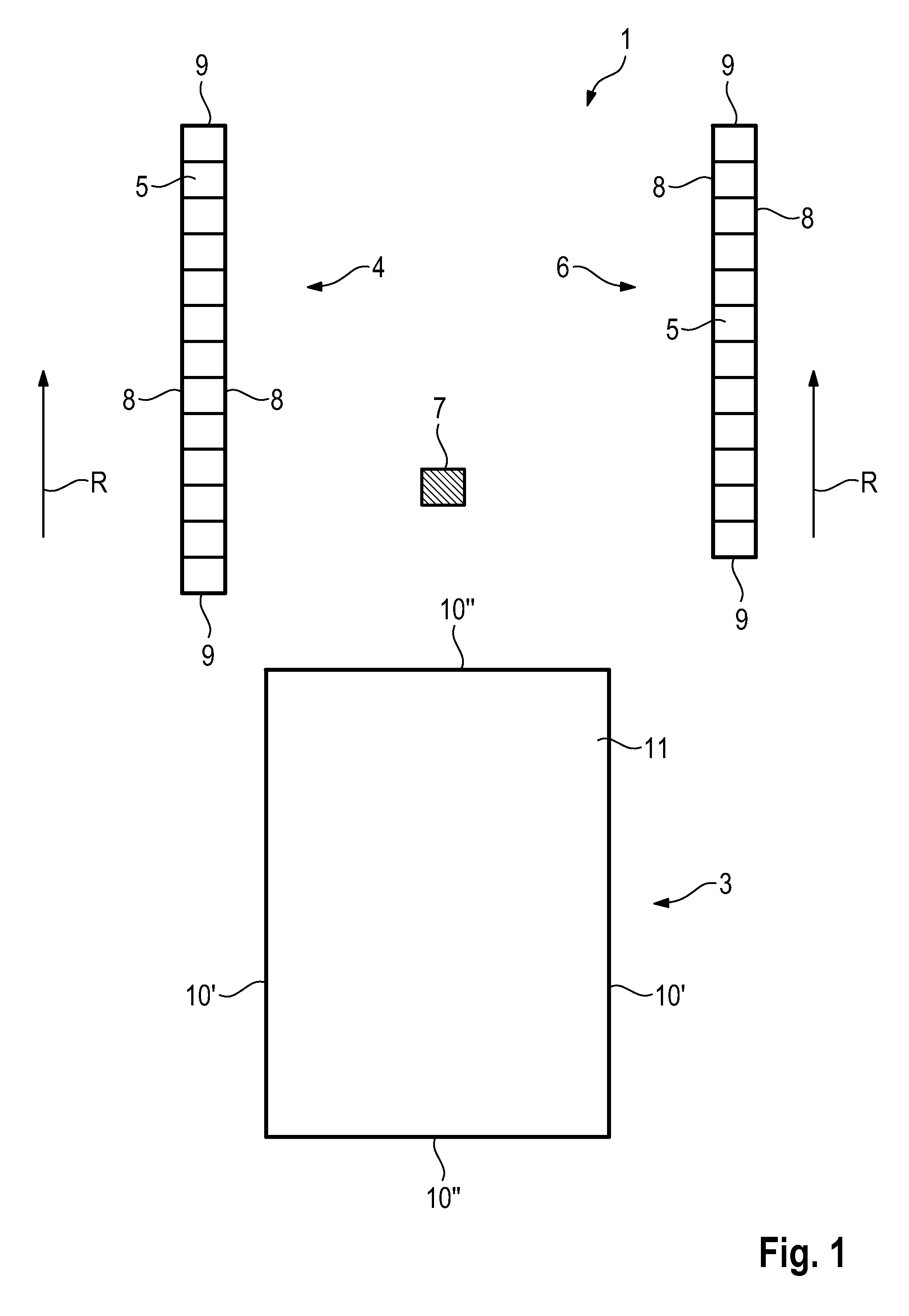Modular system for a battery
a module system and battery technology, applied in the field of modules for batteries, can solve the problems of uneconomic battery housings of different sizes, achieve the effects of reducing the production cost of the associated surroundings, increasing economic viability of battery production, and high economic viability
- Summary
- Abstract
- Description
- Claims
- Application Information
AI Technical Summary
Benefits of technology
Problems solved by technology
Method used
Image
Examples
Embodiment Construction
[0021]A modular system in accordance with the invention is identified by the numeral 1 in FIG. 1. The modular system 1 for a battery 2 comprises a battery housing 3, a first battery module 4, having a number n of battery cells 5. The first battery module 4 shown has a number of
n=13
battery cells 5. The modular system 1 further comprises at least one further battery module 6 having a higher number n+1 or a lower number n−1 of battery cells 5. The further battery module 6 shown has a number of
n=13−1=12
battery cells 5. The modular system 1 also has at least one compensation element 7, embodied as a deformation element. The battery cells 5 of the battery modules 4, 6 furthermore have the same parallelepiped form and the same size. The battery cells 5 are arranged against one another within the battery modules 4, 6 along a direction designated by R in such a way that the sides of the same size of adjacent battery cells 5 make contact with one another. Consequently, the respective battery ...
PUM
 Login to View More
Login to View More Abstract
Description
Claims
Application Information
 Login to View More
Login to View More - R&D
- Intellectual Property
- Life Sciences
- Materials
- Tech Scout
- Unparalleled Data Quality
- Higher Quality Content
- 60% Fewer Hallucinations
Browse by: Latest US Patents, China's latest patents, Technical Efficacy Thesaurus, Application Domain, Technology Topic, Popular Technical Reports.
© 2025 PatSnap. All rights reserved.Legal|Privacy policy|Modern Slavery Act Transparency Statement|Sitemap|About US| Contact US: help@patsnap.com



